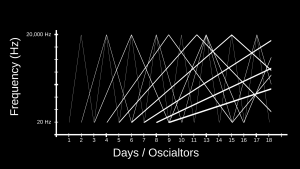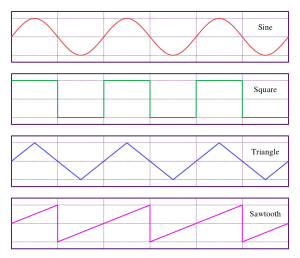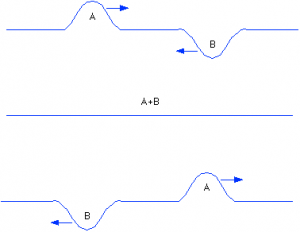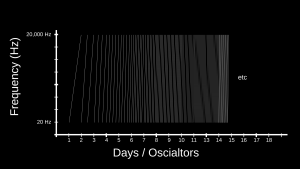Intro
Going over the footage and looking at the origin of my word, ‘escalation’, and it got me thinking about sound, because that’s where all this started. Sitting at home and taking notes it became impossible to overlook the similarities between the oncoming train in Southern Comfort and my living conditions…
[This plane is neither as close as they usually are or as large]
Marrickville. A tin roofed warehouse. Underneath the flight path.
In this environment you can’t help but develop a system of talking that incorporates what I call the “Marrickville pause”, a few seconds of agreed upon silence mid-sentence as the sound of jet engines drowns out the input from every other sense you have. Airplane noise can be a cause of conflict between the council and local residents, but they can land planes on Marrickville road for all I care. I love it. They also make a good alarm clock.
So approaching loud sounds are a thing I like and live with every day, apparently.
Experimenting
I tried to keep my ideas for this artwork simple, as that’s a thing I struggle with, but I hit on the idea of making a sound travel from one end of the spectrum of human hearing to the other. From bass, which most of us are comfortable with, to the nails on a blackboard higher hertz.
First some background on sound.
When generating sounds we start with two properties: frequency and waveform. Sound is vibration and frequency, measure here in Hertz, is how fast that vibration occurs. The faster the vibration the higher pitched the sound.
Waveforms then are the way we shape the frequency vibrations. I get a bit confused by this, but here’s a picture:
Common wave types are Sine, square and sawtooth. In sound synthesis we call devices that generate waveforms ‘oscillators’. That’ll be useful to know in a second.
Also Human hearing is allegedly from 20Hz at the bass end to 20000Hz at the upper register, but to be fair I can’t hear that fair on either side.
Version 1
Made for the context of a gallery show, a simple saw wave goes from 20Hz to 20,000Hz over the course of a single day. The next day a second, slightly detuned, oscillator joins it making the same journey. The next day a third oscilator joins in, etc until the end of the show when a chorus of oscilators make their way from 20Hz to 20,000Hz almost all together, but not quite.
Early 2000s cooking show Iron Chef would have called this ‘doubling down on the theme ingredient’. The sound escalates daily and the sources the generate it escalate over the course of the exhibition. I know you get this, but I’m pointing it out.
As each successive oscillator is randomly detuned and takes a slightly different amount to reach the end it also tends towards chaos, disorder and conflict. That’s escalation, baby!
Here’s a graph where the lines getting thicker at 20,000Hz represents the diverging times the oscillators will reach it:
Testing this out in the time required is obviously not practical, so here’s a version where I sped up the timescale. Time scale and wave shape are noted:
That Sawtooth, huh? I choose it because it takes the same shape as the piece itself – an escalation and a reset, but there are some weird sound artefacts in this and I have no idea if it’s the sawtooth wave, the program I am using to generate sound or something else. I ran it again with a sine wave to get a feel for the difference:
…and it’s much nicer, but still weird.
With sine waves I feel like I have a better idea of what’s going on. It’s easy to see how, with their peaks and troughs, they can cancel each other out. Here’s a picture:
So that the sound might phase in and out here makes a lot of sense. Less so with the sawtooth wave.
The better gauge the difference I did a quick cutting back and forth between the two:
Worth continuing investigation.
Version 1.2
Made, again, for the context of a gallery show. On day one a single oscillator goes from 20 Hz to 20,000 Hz over the course of a day. The second day two oscillators, one slightly detuned, repeat the process twice. On the third day 3 oscillators do the same thing 3 times. Etcetera. Here’s a graph, look at it because it sucked to make.
Okay, but how does it sound? Again it’s sped up, but a little something like this:
Pretty not that great, but it was an idea.
Version 2
Similar ideas, different approach. Version 2 starts off on day with with the same number of oscillators as there are days the show will run for. Each oscillator moves from 20 Hz to 20,000 Hz over the course of the show, taking as many days to do so as it appears in a numbered list. Does that make sense?
Oscillator 1 goes from 20 to 20,000 in a day. Every day beyond that it will play 20,000 Hz only.
Oscillator 2 goes from 20 to 20,000 over two days. Every day beyond that it will play a sligthly detuned 20,000 Hz only.
Oscillator 3 goes from 20 to 20,000 over three days. Every day beyond that it will play a sligthly detuned 20,000 Hz only.
Etcetera. Here’s a graph:
And here are some videos of some of it with a massively compressed time scale
Sawtooth flavoured:
Sinewave fresh:
This is promising.
Version 3
Version 3 is purely theoretical, but here’s a graph:

Every day an oscillator is added. It takes its number in line and moves from 20 Hz to 20,000 Hz over that number of days. On reaching 20, 000 Hz to goes back to 20 Hz at the same speed. To write it plainly…
Day 1:
Oscillator 1 goes from 20 Hz to 20,000 Hz.
Day 2:
Oscillator 1 goes from 20,000 Hz to 20 Hz.
Oscillator 2 goes from 20 Hz to 10,000 Hz.
Day 3:
Oscillator 1 goes from 20 Hz to 20,000 Hz.
Oscillator 2 goes from 10,000 Hz to 20,000 Hz.
Oscillator 3 goes from 20 Hz to 6,680 Hz.
Day4:
Oscillator 1 goes from 20,000 Hz to 20 Hz.
Oscillator 2 goes from 20,000 Hz to 10,000 Hz.
Oscillator 3 goes from 6,680 Hz to 13,340 Hz.
Oscillator 4 goes from 20 Hz to 5,015 Hz.
There is no video, only the graph. Deal.
Yeah, but what’s it like?
As the kids said about six months ago: it fucking rips! OMG. R.I.P.S.
I really doubt Processing’s time keeping ability, but here are some versions that claim they are running at correct speed. At very least they are much slower.
Version 1 – Sine wave, RIPS
Version 1 – Sawtooth, Sucks tbh.
Less good. I mean, demonstrably less good.
Version 2 – Sine only, Just excellent. Like the start of a Merzbow gig.
That’s all folks
I feel like that’s been a fruitful set of experiments. Lots left to play with, but as a restrained expression of an idea I’m happy with it.




